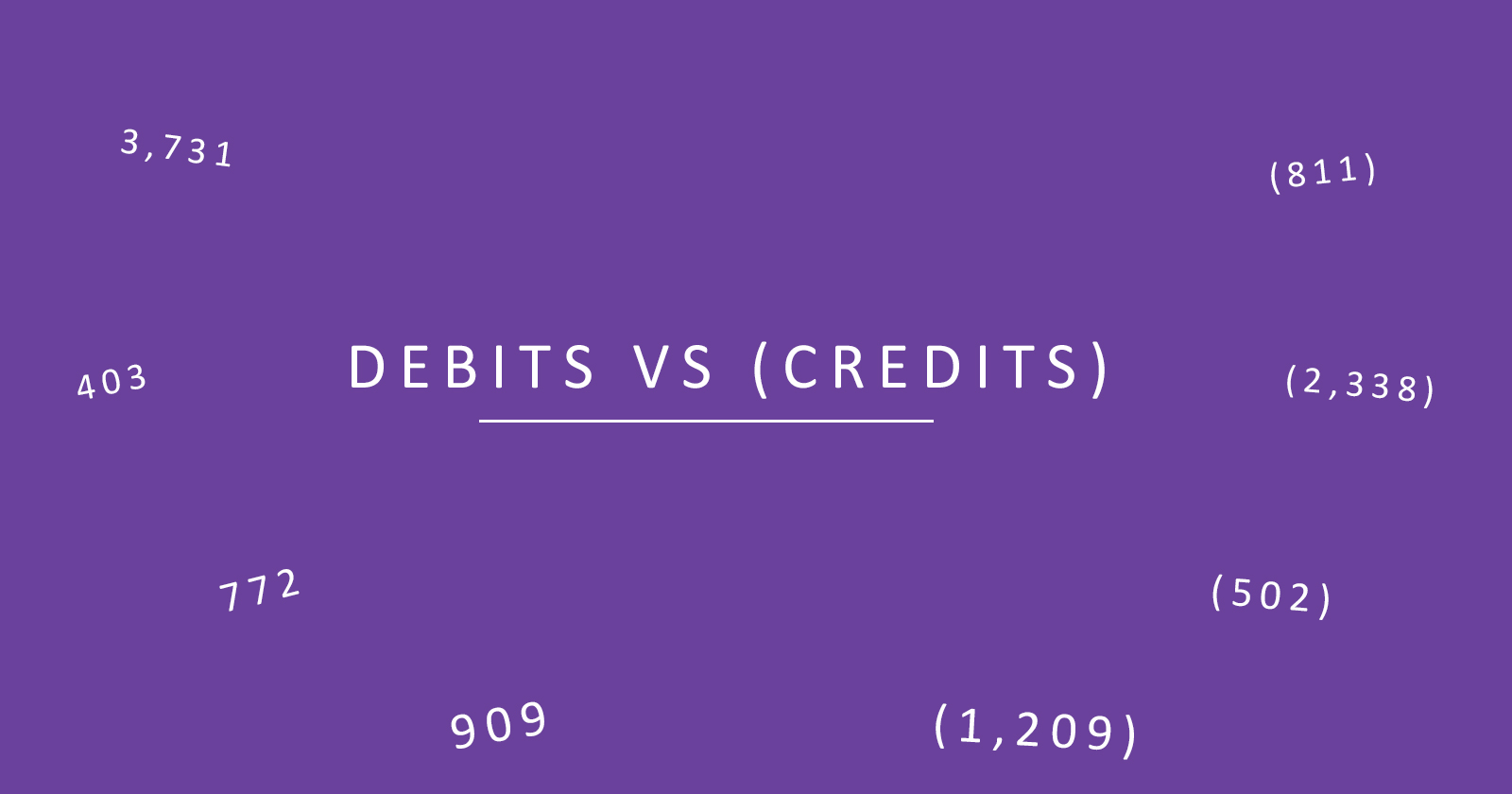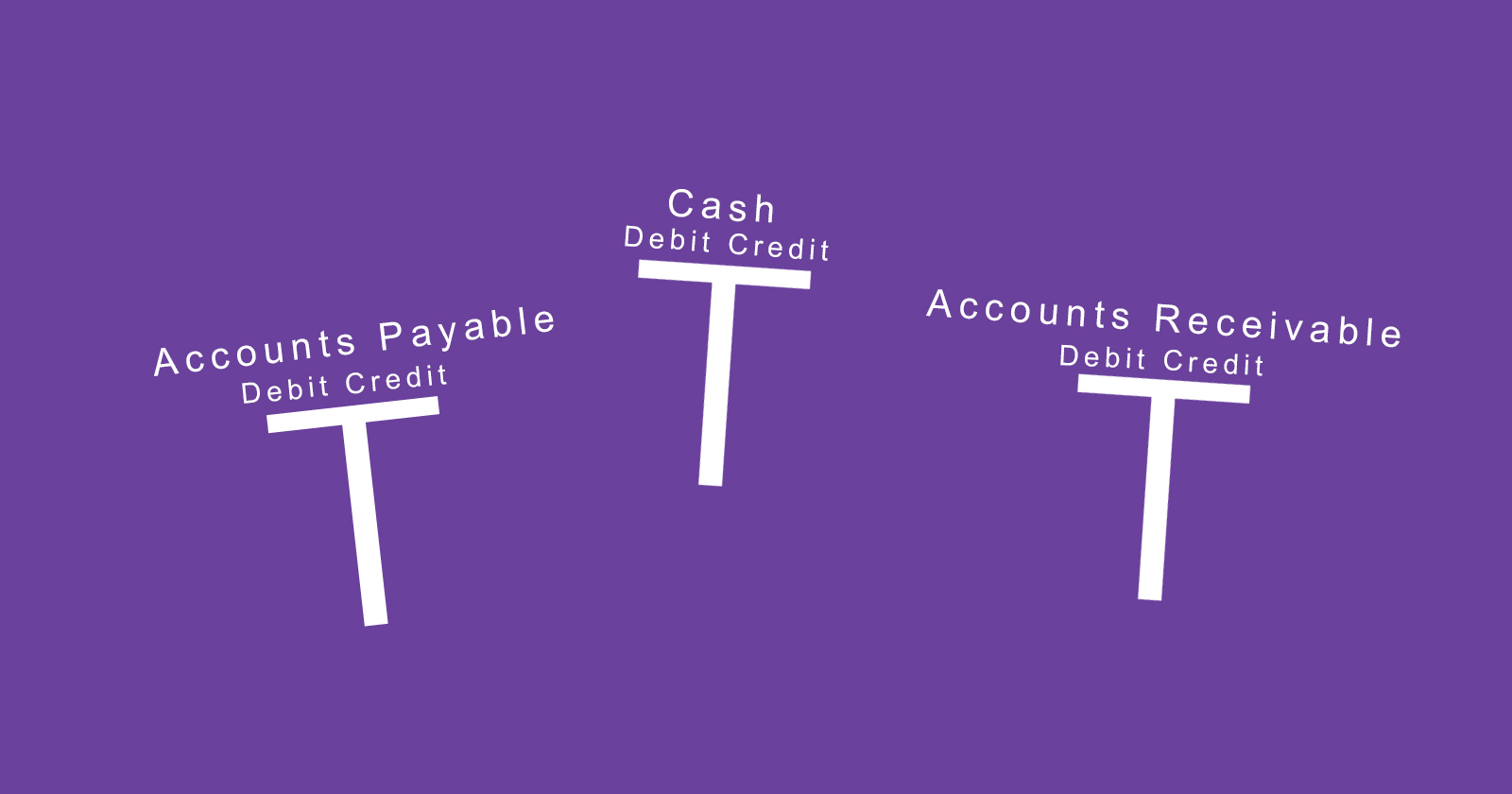Building off our introduction to the basic accounting equation and a definition of accounts, the next thing we will learn is that every transaction is an accounting debit or credit. Determining a debit or credit depends on the type of transaction. We’ll look at how debits and credits are different from one another and explain a high-level overview of both. Learning debits and credits is an essential step when learning accounting so let’s dive right in.

What is a Debit in Accounting?
A debit can increase or decrease an account depending on the normal balance of the account. Let’s slow down there because it can be confusing for a beginner. An account is the collection of all debits or credits and keeps a running total. An example of an account would be the cash account which falls under assets. Debits and credits are how we record transactions into accounts.
A debit will increase:
- Dividends
- Expenses
- Assets
A debit decreases:
- Liabilities
- Equity
- Revenues
What is an Accounting Credit?
A credit is similar but it increases the opposite and decreases the opposite.
A credit increases:
- Liabilities
- Equity
- Revenues
A credit decreases:
- Dividends
- Expenses
- Assets
We have already covered the basic accounting equation and these 5 major account types already (assets, liabilities, equity, revenues & expenses). If you need to take a few minutes to go back and refresh your mind on them, feel free.
Debits and credits seem so similar, so why are they different? The simple answer is because of double-entry bookkeeping/accounting. Every time you make a debit, a credit needs to be made as well in the general ledger.
The general ledger, also known as the “GL” between accountants and auditors, is where you see every debit and credit or entry for a company’s accounting. That is why it is called the general ledger. Whenever auditors need to check individual transactions, they will ask for a company’s general ledger.
That’s the full circle on where debits and credits go and how they work to increase and decrease accounts but let’s get back to them.

How is an Accounting Transaction Booked into the General Ledger? An Example
Debits and credits are captured into the accounting books and records or also called the general ledger by journal entries. Journal entries are when there is a debit and a credit matched for the same amount. This means every transaction needs to balance and have an offsetting debit and credit.
For example, when a business earns money, they would make the following entry:
Debit Cash $500
Credit Sales $500
This is saying increase sales by $500 which is a revenue account since a product or service was sold. Additionally, increase the cash account for the same amount since cash was collected. The cash account is increased with a debit since it is an asset account. This is a simple example but shows you how a single transaction would be recorded with debits and credits.
Normal Account Balances: What it Means
Let’s take cash as one of the easier examples and walk through it. The cash account for any business will have a normal account balance of a debit since it is an asset.
As we saw above, a debit to the cash account increases cash. So on the flip side, a credit would decrease cash. An overdrawn cash account would have a credit balance instead of the normal debit balance. There is an easy way to keep track of debits and credits, that is by using T Accounts. T Accounts will be out next lesson so make sure you continue on and after that, we’ll dive further into the normal balance of an account.
Do You Really Need to Know Debits and Credits in Accounting?
Debits and credits are the essential building blocks of accounting. They certainly can be confusing when starting out but try to process some information and come back to it. Over time you will be able to recall which accounts have a normal debit balance vs which have a credit balance.
If you are learning accounting, you should get an understanding of debits and credits. The subject is tested in any beginner accounting course in a college. It would be pretty hard to read a financial statement without a general understanding of debits and credits.
Luckily accounting systems will make most of these entries for you once set up. Quickbooks can credit Sales and debit Cash without you having to go in and make each manual journal entry. So while you need an understanding of debits and credits, you won’t be manually inputting every transaction for a small business.
Let’s Recap Accounting Debits vs Credits
So far we have learned:
- Debits and credits are the single entries that go into the accounting books and records
- Accounts will have a normal debit or credit balance depending on if they are an asset, liability, equity, income or expense
- The general ledger is where all entries are captured on an itemized level
- Journal entries in the general ledger must have a corresponding debit and credit for double-entry bookkeeping
- T Accounts can help you keep accounting in order for individual accounts
Final Thoughts on Accounting Debits and Credits
Debits and credits don’t have to be confusing. Think of them as a way to capture every transaction in a business. From there, figure out the normal balance and make a double entry (an entry with a corresponding debit and credit) into the books and records. The more you study accounting, the more intuitive debits and credits will be. Let’s make them even easier to understand in our next lesson on T Accounts.





